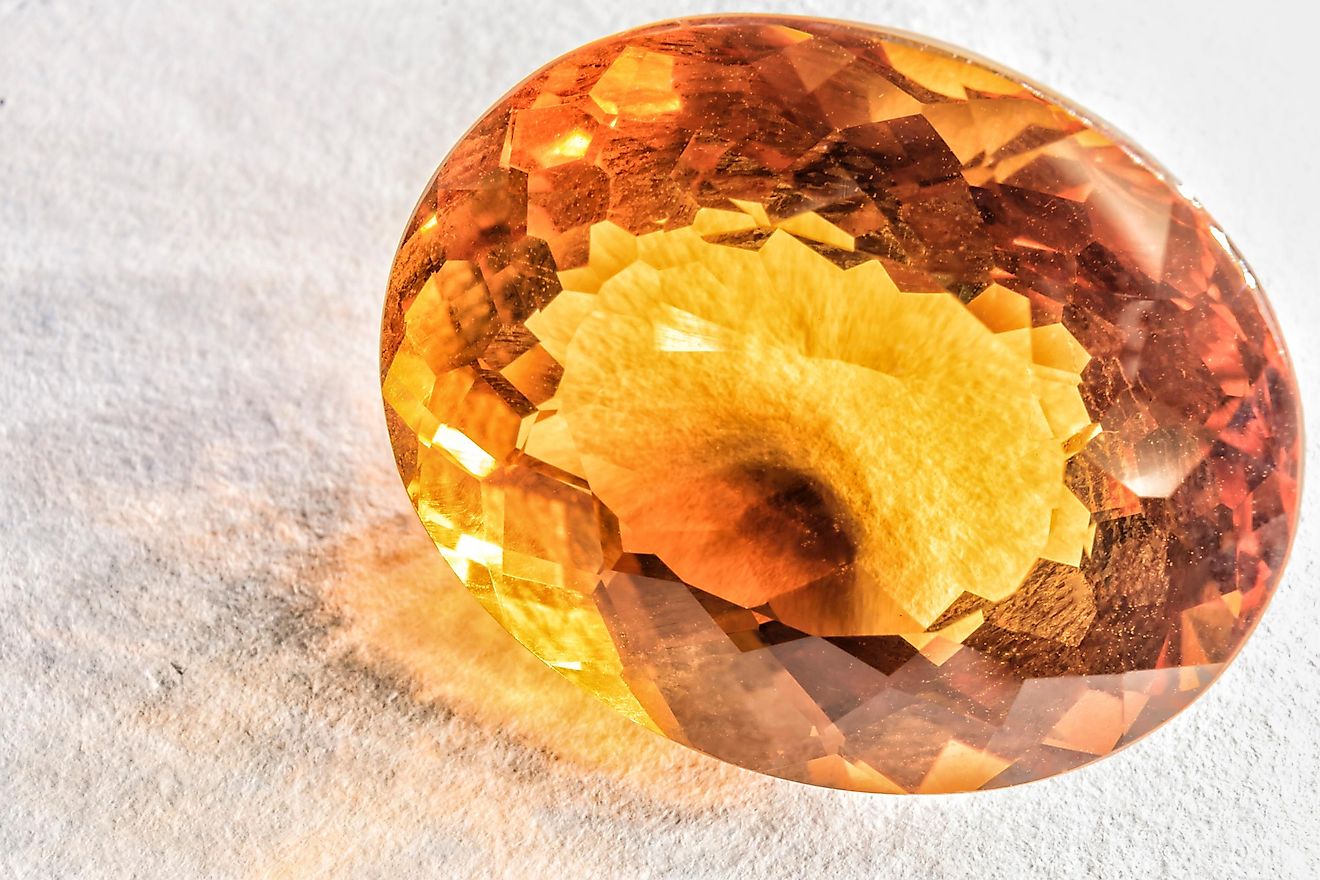November Birthstone: Citrine

Clever marketing along with the rise of “earth tone” fashions, has made citrine a popular jewelry stone in recent years. Gold-colored gems can be attractive because they carry the association with the sunshine. For centuries, citrine has been said to hold the power of the sun. Citrines were believed to improve mood, help to cope with novel environments, fight fears, and melancholia - not surprising for the sunny stone. It is considered to communicate the meaning “radiating joy.”
Qualities Of Citrine
Citrine is one of the rarer types of quartz found in nature but easily produced by heat-treating other varieties. Its characteristic yellow-to-orange color is caused by a trace of iron in its structure. Because this gemstone has sufficient hardness and is readily available in large sizes, its price is mainly determined by unusual custom cuts. Citrine is popular for statement cocktail jewelry.
In previous decades, citrines were not particularly popular, mainly due to their abundance. However, fashion changes and gold-colored stones returned to the trend. Home shopping networks also helped citrine’s fame significantly, marketing shades of citrine aggressively under fancy names like “butterscotch” and “whiskey.” This has worked: citrine has become the second most popular variety of quartz in jewelry after amethysts.
More intense yellow citrines are more valuable. “Madeira,” a vibrant orange colored citrine with red hues, is probably the most recognizable. Stones laking the color intensity are valued significantly less, with pale or smoky rocks at the bottom. Larger sizes are readily available and inclusions will decrease value.
Where To Get The Best Citrine
Natural citrine can be challenging to find, despite quartz being one of the most abundant gem minerals in the Earth’s crust. This gemstone is found worldwide, but some of the most important localities of note are Brazil, India, Madagascar, and Sri Lanka. In Bolivia, amethyst and citrine hues can occur together in the same crystal. These multi-color gemstones are called ametrine.
How Can I Tell A Natural Citrine From A Treated One?
Because of the low mining yield of citrine, the vast majority of richly colored citrines are other quartz gems that have been heat-treated. Colorless quartz stones can produce neon yellow “lemon” quartz after irradiation and heat treatment. Essentially, those stones are citrine, and the heating occurs right at the mine, so this stable treatment is fully accepted in the gem trade practice.
How To Tell If A Citrine Is Real
Although natural quartz is common and treatment to produce citrines is inexpensive, synthetic quartz can be lab-grown in large quantities and at a low cost. It can be quite challenging to tell synthetic quartz from a natural one.











